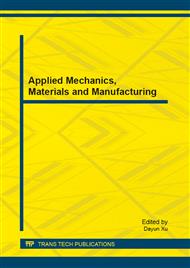p.340
p.346
p.350
p.355
p.362
p.367
p.375
p.382
p.387
Experimental Study on Cavitation Boundary of Journal Bearing
Abstract:
Under high and super-high speed conditions, oil film of the journal bearing is easy to crack and then becomes cavitation. The existence of cavitation has a great effect on the work characteristics of the bearing. Cavitation boundary of a three-groove journal beaing was investigated on the journal bearing experimental rig. The influences of rotating speed and supply pressure on cavitation boundary were studied. And experimental equations of reformation location and the percent of rupture area are established. The results show that rupture location of oil film is not related with rotating speed and supply pressure, otherwise reformation location of oil film is effected greatly by them. The experimental equations lay foundations for next research on cavitation theory model and stability.
Info:
Periodical:
Pages:
362-366
Citation:
Online since:
August 2013
Authors:
Price:
Сopyright:
© 2013 Trans Tech Publications Ltd. All Rights Reserved
Share:
Citation:


